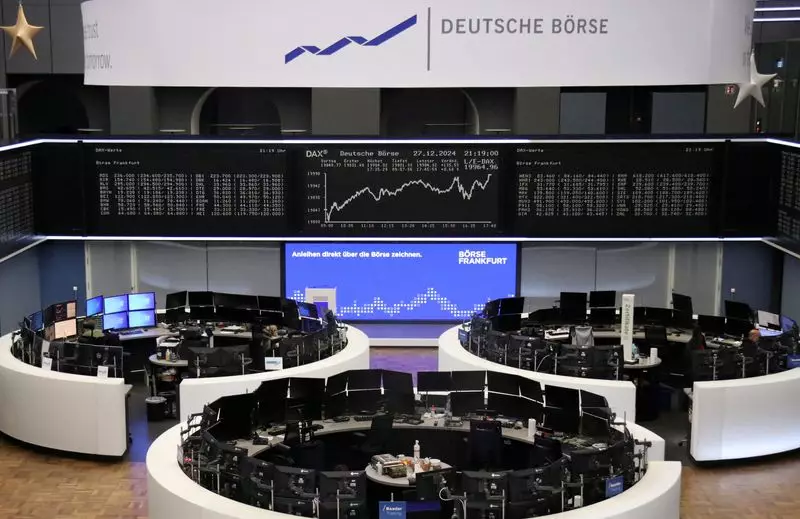As the year draws to a close, European stocks experienced a downturn, following a similar trend set by their counterparts in Wall Street. This decline, marked by a 0.6% drop in the pan-European STOXX 600 index, reflects the apprehension among investors stemming from elevated government bond yields. Investors are increasingly cautious, choosing to withdraw from equities, a decision influenced by the past year’s surprisingly robust market performance in several regions.
The reduced trading volumes can be attributed to the impending New Year holiday, contributing to the market’s instability. As many markets, including Germany, Italy, and Switzerland, prepare for closures, trading activities in the UK and France remain limited to a half-day schedule. Such conditions create an environment ripe for volatility, where even minor fluctuations can lead to significant market movements.
A significant factor contributing to the market’s fluctuations is the persistent rise in bond yields, particularly seen in the 10-year German bund, which neared its highest levels since mid-November. This increase can be linked to broader uncertainties surrounding future monetary policies and the potential for inflation, especially in the context of a Trump presidency. These concerns weigh heavily on investor confidence, leading to a ripple effect throughout the European markets.
Despite these short-term challenges, the STOXX 600 is on course to achieve an annual rise of 5.9%, with German stocks delivering strong performance. However, this figure pales in comparison to the impressive 25% surge observed in the S&P 500, driven largely by aggressive interest rate cuts from the Federal Reserve and an explosive growth in AI-related investments.
The performance of various sectors within the European market further illustrates the unequal landscape. While the German DAX may have dipped by 0.4% on one of the last trading days of the year, it stands out as a significant annual performer with an expected rise of 19%. In contrast, France’s CAC 40 has been hindered by fiscal concerns and political instability, prompting projections of a 2.5% annual decline.
The uneven performance across sectors highlights substantial disparities. The food and beverages, along with automotive sub-sectors, are projected to be among the weakest performers, while banks appear poised to yield positive results. Such sector-specific trends underscore the diverse landscape of the European markets, influenced by varying economic conditions and investor sentiment.
On the other side of the Atlantic, the sentiment surrounding technology stocks remains volatile. Major players such as Amazon and Microsoft witnessed declines, leading the S&P 500 to settle at a low that hasn’t been seen in over a week. This drop serves as a reminder of the sensitive nature of tech stocks, especially in times of climbing Treasury yields, which can significantly alter investor behavior.
In the midst of these market fluctuations, companies like Siemens Healthineers are facing challenges internally, with significant restructures announced by key executives. Conversely, companies like BayWa showcased resilience, with a notable 17% surge following positive restructuring news.
As the European market navigates its complexities, the final trading days of the year paint a picture of cautious optimism, bolstered by the substantial gains made earlier in the year despite looming uncertainties.

